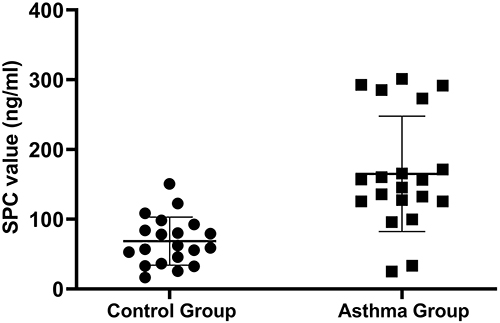Sui H, Shen H, Zhang C, Wang M, Zhen Z, Zhang J. J Asthma Allergy. 2024;17:391-397
https://doi.org/10.2147/JAA.S447145
Abstract:
Objective: This study aimed to explore whether saliva pepsin concentration (SPC) could be regarded as a risk factor for the occurrence and unfavorable control of asthma in children with allergic rhinitis.
Methods: A prospective study was conducted on a group of 20 consecutive children newly diagnosed with allergic rhinitis and asthma (referred to as the asthma group). All these children underwent fractional exhaled nitric oxide (FeNO) measurement, lung function tests, and assessment of asthma control using the 7-item Childhood Asthma Control Test (C-ACT) score. Simultaneously, a control group consisting of 20 children with simple allergic rhinitis, matched for baseline characteristics, was included. SPC measurement was performed in the two groups.

Results: The SPC value was significantly higher in the asthma group than that in the control group (165.0 ± 82.8 ng/mL vs 68.4 ± 34.5 ng/mL) (P < 0.001). In the asthma group, SPC was independently associated with FeNO, the ratio of forced expiratory volume in 1 second (FEV1) to forced vital capacity (FVC), and forced expiratory flow at 50% and 75% of FVC (FEF50 and FEF75) (all P < 0.05). The severity of nasal symptoms evaluated by the visual analogue scale (N-VAS) was independently associated with FEF75, the maximal mid-expiratory flow (MMEF), and C-ACT score (P < 0.05).
Conclusion: Direct pepsin exposure and uncontrolled nasal symptoms may play crucial roles in the pathogenesis and progression of childhood allergic asthma. The SPC value can be considered as a risk factor for asthma in children with allergic rhinitis.
